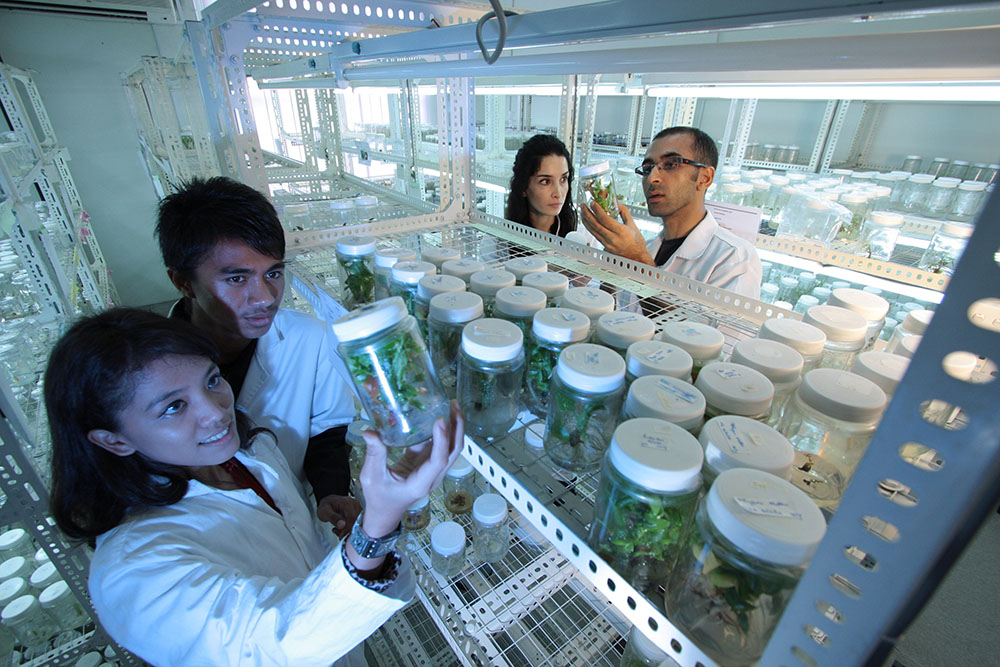 Does censorship, defined as the suppression and restriction of communication and the flow of information, hamper innovation? Most people would argue that this is not a question of ‘if’ but rather ‘how much’. In the following article Max von Zedtwitz, James Haynes and Joachim Jan Thraen explain that it is also a question of ‘how’ and ‘where’.
Does censorship, defined as the suppression and restriction of communication and the flow of information, hamper innovation? Most people would argue that this is not a question of ‘if’ but rather ‘how much’. In the following article Max von Zedtwitz, James Haynes and Joachim Jan Thraen explain that it is also a question of ‘how’ and ‘where’.
Innovation is the creation, introduction and adoption of something new. We often associate it with new products and new technologies, but innovation can also come in the form of new ways of doing things, new forms of organisation, new standards or new value systems. In many ways, China has been an extremely innovative society over the past few decades. Although not all of these innovations emerged in China, many contributed to change in the country and helped to make it what it is today. Innovative companies such as Alibaba, Beijing Genomics Institute and Xiaomi are just a few examples.
All of this happened despite censorship, so censorship does not necessarily preclude all innovation and progress. China does restrict people’s access to information, but this is not a unique situation: parents censor and control their children’s access to certain TV programmes and many Western governments restrict the propagation of subversive material relating to, for example, fascism, child pornography or terrorism. Generally though, China does impose greater censorship on its citizens than most other countries, but one must consider censorship in a multi-dimensional spectrum rather than an absolute, ‘either-or’ regime.
For instance, when it comes to technological information China does not seem to restrict access or communication very much at all. If anything the relatively lax implementation and enforcement of intellectual property rights (IPR) is the opposite of censorship. China encourages the propagation of technology, so censorship in these areas is negligible. Censorship becomes more publicly noticeable when it relates to politics and current events. Whether in the form of directives handed down from controlling ministries or through self-regulation of journalists and news editors, there are certain standards as to what is acceptable for public consumption and what is not. This also is not a phenomenon unique to China: Western Internet search engines prioritise which information to present to their customers based on certain rules that are only partially controlled by the public – information can be eliminated entirely or favoured prominently depending on companies promoting services or products, for instance.
The real question thus becomes, does censorship aimed at restricting non-technical and political information affect innovation negatively in China? We tend to think it does. The key problem is that while censorship may not be directed at restricting access to technological information, as input to innovation, it stifles people’s ability and interest to gather information about problems and solutions in general, including innovation-relevant insights. It also curbs individuals’ incentives and willingness to publish and generate information for others.
The Great Firewall of China
The Great Firewall of China (GFC), a system that prevents access to websites deemed undesirable by the Chinese Government, is one of the primary tools of censorship in China. Chinese citizens cannot access Facebook, Twitter, and other Western social media sites, as well as many Western news sites, government sites and most foreign videos. The result is that Chinese citizens are not able to freely access foreign ideas and information.
Innovation is the solving of problems by means of new ideas. Problem sharing and problem reporting are a significant portion of social media and news reports and discussions. If Chinese citizens are not receiving and participating in these subjects they are cut off from finding out about these problems. We see four ways how this hampers innovation.
First, if Chinese citizens are prevented from learning what the rest of the world’s problems are they are unable to innovate and help to solve these problems. Therefore, the GFC is inhibiting China from receiving foreign funds for innovation. That is, the Chinese Government is attempting to restrict their problem set to only ‘Chinese problems’, thereby limiting the scope of what innovation China could achieve. This can be observed by an absence of Chinese solutions to foreign problems in Europe or the United States, for example.
Second, since foreigners can all access Chinese information they can participate in solving Chinese problems. This is also easily observed – many solutions to Chinese problems are provided in China by foreigner companies such as software, pharmaceuticals and automobiles. Therefore the GCF places China at a disadvantage in that foreign companies can innovate in China but Chinese companies cannot reciprocate.
Third, the GCF makes it more difficult for China to see how problems were solved in foreign countries, and this restricted access impedes China’s ability to solve their own challenges. There has been a tremendous import of technology and ideas to China over the years but much of this has been what foreign companies have been willing to concede rather than what China has actually needed. To fully understand a technology the adopter must have the freedom to become fully immersed in the technology and its socio-cultural context. Limiting this access restricts China’s creative spirit.
Finally, the GCF slows domestic access to information and ideas. Internet access, download speeds and efficiency of communication are significantly slower than in other countries. This puts Chinese entrepreneurs at a distinct disadvantage in terms of time and money spent on developing their innovations. Also, foreign companies are increasingly hesitant to move time-critical (and IP sensitive) activities to China, so it would come as no surprise to see Chinese companies relocating time-critical activities outside of China and bringing back completed solutions that no longer rely on communication efficiency.
“The first condition of progress is the removal of censorship.” – George Bernhard Shaw
Free flow of information as the backbone of innovation
In the early stages of innovation, ideas and new concepts are fragile and vulnerable. Unless given the opportunity to blossom and develop they can be quickly exterminated by the ruthlessness of reality. It is therefore essential that ideas and knowledge be transferred effectively to allow them to be absorbed in the knowledge context of others so they can quickly put down roots and grow in different ways. Companies that feed their product development teams filtered and ‘pre-chewed’ data cripple their innovation ability. Although the ‘truth’ about some new innovations may be inconvenient and unsettling it allows companies to react in time, change strategies, redesign products and reinvest capital more efficiently.
In general, most analysts agree that censorship leads to isolation and this can only be bad for creativity and innovation. Some believe that China is big enough to be an independent market of creativity and innovation but this argument is weakened by the ongoing practice of internal censorship and the relative lack of domestic creative diversity.
Censorship may be helpful in nurturing fledging industries and does not automatically lead to the creation of domestic monopolies, as illustrated by the fierce competition among Chinese domestic companies in many industries. However, competition does not necessarily nurture innovation; rather, innovation leads to competition. China’s market is still enormous and perhaps large enough to allow every innovation at the global level but censorship of foreign companies in this market comes at a cost. Also, it doesn’t protect Chinese entrepreneurs from the large Chinese powerhouses that swallow up underfunded startups. Many startups that do not have the political clout to protect themselves and rely on the ability to demonstrate the superiority of their product are strongly affected by the absence of unrestricted access to new ideas and concepts. Greater transparency would likely provide Chinese entrepreneurs with more options to develop their innovations faster, for example with the support of foreign capital, access to foreign markets and foreign expertise. Ultimately this would benefit Chinese innovation in the long run.
Can censorship help innovation?
It could be argued that the absence of ‘unencumbered creativity’ can lead to unique solutions completely different from those that currently exist, having been created free from the influence of pre-existing solutions or technology. This clean-slate approach has led to many breakthrough innovations, which are often far superior in efficiency and effectiveness without the constraints of having to be compatible with legacy systems. Such innovations can benefit more mature foreign markets but there is a substantial risk that many of these are ‘hacks’ around existing constraints and based on existing technology. Many of these indigenous innovation projects in China have not been very successful. A pure clean slate is virtually impossible anywhere – a testimony to the ineffectiveness of total censorship.
Having said this, these kind of attempts at indigenous, self-reliant innovation will strengthen China’s ability to master all stages of technology and product development. It will also build a ‘can-do’ spirit – an understanding that, if needed, China would be able to go it alone. In this sense censorship has had a certain educational effect on Chinese innovators.
Outlook
Overall, the impact that censorship has on innovation is clearly more detrimental than advantageous. Foreign companies based in China, in particular those trying to leverage the innovative potential of their local employees, bear these costs. Global research and development (R&D) and innovation programmes are often curtailed in China due to local regulations and insufficient capability, both related to the negative effects of censorship, IP policy and information access limitation. While foreign companies always have the option to relocate R&D work elsewhere Chinese employees don’t have the flexibility to follow. In the long run their professional advancement is slowed down even though this is less obvious if their comparison benchmark is solely in China. Therefore, foreign companies conducting innovation in China may serve as guiding examples leading the way in China’s development towards an open, innovative business environment.
Dr Max von Zedtwitz is a professor of innovation and international business at Skoltech, Moscow, visiting professor at several universities in China, and director of the GLORAD Center for Global R&D and Innovation. Dr James Haynes is a partner with Tee & Howe IP Attorneys in Beijing. Joachim Jan Thraen is a research associate at GLORAD, and doctoral student at the University of St Gallen, Switzerland.
Acknowledgements and credits to GLORAD research affiliates: Dr Peder Soberg, Dr Simone Corsi, Dr Koray Altun, Puja Abbassi, Dr Boris Bauke, Ugur-Mikail Catmak, Dr Michael Hoeck, Vytaute Dlugoborskyte, and Juan Shao.




Recent Comments